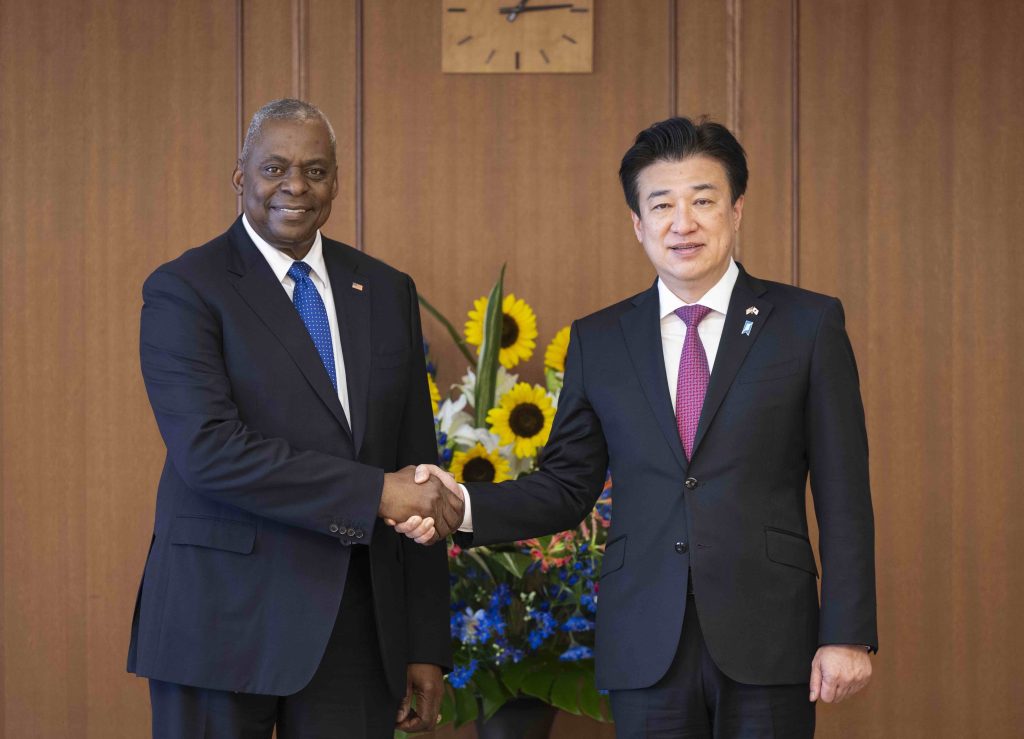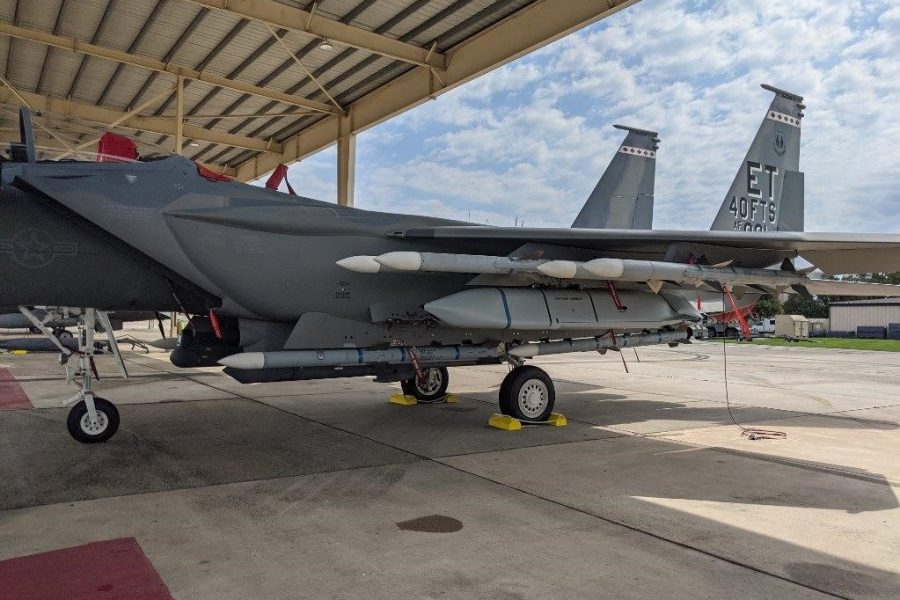Japan will lend its industrial prowess to help produce shore up munitions supplies, under an agreement with the United States to co-produce Advanced Medium-Range Air-to-Air Missiles (AMRAAM) and Patriot PAC-3 missiles, the two countries announced July 28.
The agreement comes as the U.S. also agreed to restructure its command and control relationship with Japan amid rising concern about China. The U.S. will reconstitute U.S. Forces Japan as a joint force headquarters under U.S. Indo-Pacific Command, to coordinate security activities in and around Japan in accordance with the U.S.-Japan Treaty of Mutual Cooperation and Security.
“I am … proud of our work together to support Japan’s counterstrike capability,” Secretary of Defense Lloyd J. Austin III said in Tokyo on July 28. “We’ll bolster defense industrial cooperation, including missile coproduction, and we’ll increase our bilateral presence in the southwest islands. “

Austin and U.S. Secretary of State Antony Blinken spent the weekend at the U.S.-Japan Foreign and Defense Ministerial Meeting in Tokyo. In a joint statement, the two nations called missile co-production “mutually beneficial” for expanding and diversifying supply, as Washington seeks to balance its requirements with export demand for Ukraine and other allies.
“These efforts will improve our ability to deter and manage coercive and destabilizing behavior,” Austin said.
Japan’s Mitsubishi Heavy Industries will manufacture the missiles under license to the U.S. weapons maker Lockheed Martin. Japan is already producing Patriot PAC-3s, but making AMRAAMs will be a new venture.
AMRAAM is an advanced radar-guided, fire-and-forget air-to-air missile carried by F-15, F-16, F/A-18, F-22, and F-35 fighters. Japan has had AMRAAMs in its arsenal dating back to the 1990s, and as recently as last December signed a $224 million deal to acquire 120 AIM-120C AMRAAMs. Under the new agreement, Japan will be licensed to produce AMRAAMs itself. It remains uncertain whether Japan-made AMRAAMs will be solely for domestic use or might be available for export.
Japan first acquired Patriot missile interceptors nearly two decades ago. The PAC-3 is crucial to the Japan Self-Defense Force’s missile defense strategy.
In December, Tokyo changed its defense export regulations to allow domestically produced PAC-3 missiles to be exported to the U.S. By the end of this year, the two nations’ joint platform, Defense Industrial Cooperation, Acquisition, and Sustainment (DICAS), will provide additional details on timelines, procurement needs, and funding strategies for the weapon co-production.
Joint Force Headquarters
The U.S. and Japan also revealed plans for what Austin called “the most significant change to U.S. Forces Japan since its creation.” Establishing U.S. Forces Japan as a Joint Force Headquarters aligned with Japan’s new Joint Operations Command aims to enhance combined operations between the two military arms.
The U.S. will also step up its military presence on Japan’s southwest islands, those closest to Taiwan and the South China Sea. The Pentagon previously announced plans to base 36 F-15EX aircraft at Kadena Air Base, replacing a patchwork of combat jets that has deployed there since older F-15C/D models were retired. The U.S. will also add 48 F-35As at Misawa Air Base, replacing aging F-16s.
“We’re also strengthening our defense cooperation with other allies and partners in the region, including Australia, India, the Republic of Korea, and the Philippines,” Austin said. Departing Japan on Sunday, Austin and Blinken next headed to Manila for the fourth U.S.-Philippines 2+2 Ministerial Dialogue.
